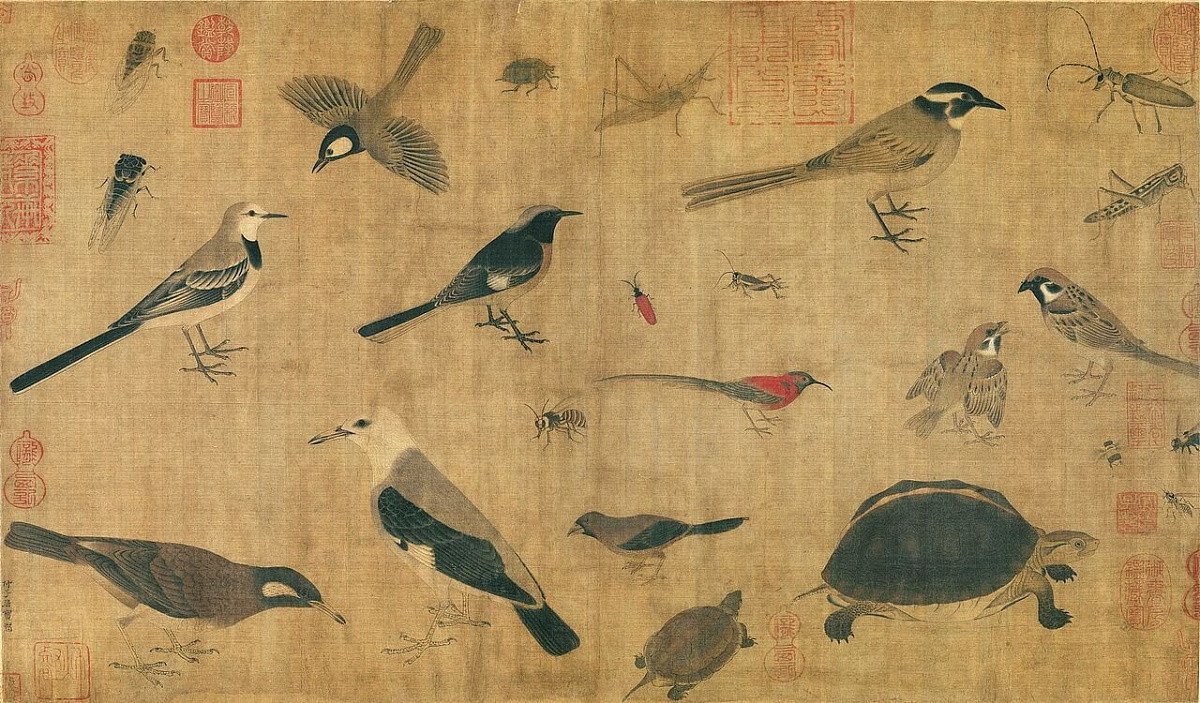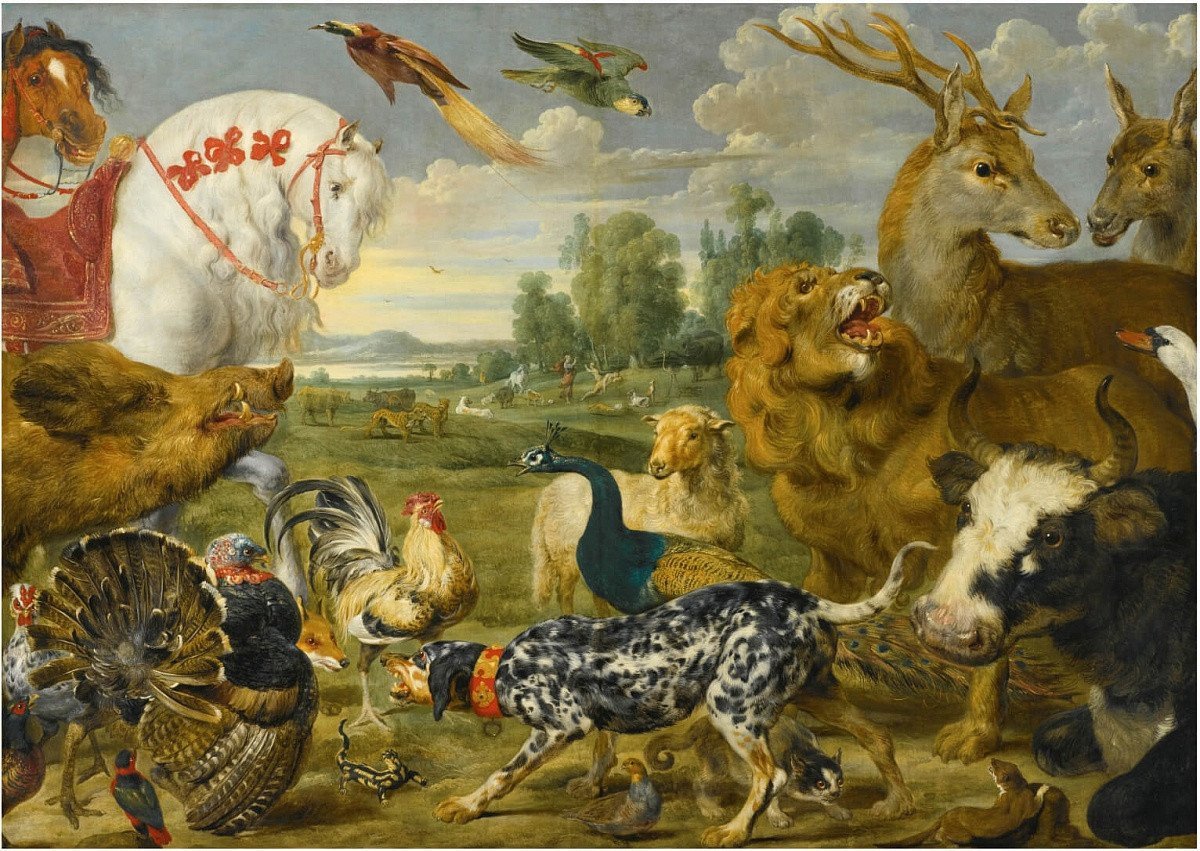ANIMAL PAINTINGS

The name of the animalistic genre or animalism speaks for itself. It is pretty obvious that the title of this genre is based on the Latin word animalis meaning animal. The main motive of this type of fine art is the images of representatives of the fauna. The genre is present in different types of art in painting, as well as in sculpture and graphics.
Our distant ancestors began to draw animals back in the late Stone Age, in the era of the Aurignacian archaeological industry, and this is neither more nor less than 32-26 thousand years ago. These early monuments of animalistic works are still primitive, marked only with an outline; their details have not been worked out. Nevertheless, they accurately convey the essence of the depicted, and it is possible to determine which animals the ancient people had in mind. Already at that time, the art of animal depiction had both a realistic and a fantasy trend. The latter appeared with the formation of ancient religious practices and rituals. The artists of this movement depict fictional animals and deities with zoomorphic features.
The animal painters of the Nile Valley were very successful in depicting the animals they worshiped. The ancient Egyptians painted them on the walls of the premises of temples, pyramids and burial architectures, where the rulers of this country, the pharaohs, and representatives of the clergy, the priests, found their final resting place. The fauna of the country is also captured in quite utilitarian works, ceramics and children’s toys.
Another feature of ancient Egyptian culture is the tradition of mummifying the bodies of people and animals. In the latter case, the mummies were kept in ceramic containers that reproduced the appearance of these animals. Animalistic images of cats and other Egyptian fauna, including crocodiles and ibises, amaze with how skillfully they are done. Images of animals became prototypes for hieroglyphs, on which the writing system of the ancient Egyptians was based.
The ancient Greeks just went the other way around. They did not imagine their deities in the form of animals. However, the symbols of the Greek gods were often animals that accompanied them in their deeds. The symbol of the main ancient Greek god Zeus was an eagle, and the patron goddess of military art was an owl; the deer symbolized the goddess of fertility Artemis. Images of these animals are seen next to the statues and drawings of the gods. On the reliefs that once adorned the Parthenon, sculptural images of horses have been preserved.
The Chinese masters of animal painting did not lag behind their colleagues. One of the common genres of Chinese painting is called Bird-and-flower. Its emergence in the 10th century was facilitated by the work of the famous animal painter from China, Huang Quan. On the wall, he created a work with cranes, by the order of the ruler. The hall where he performed it has since become known as the Hall of the Six Cranes. Another work of this artist, also a wall animalistic work is Birds and Flowers in the Four Seasons. Together with their father, Huang Quan’s sons Huang Jucai and Huang Jubao are considered to be the founders of this genre.
In the 11th century, Yi Yuanji, a talented animal painter of the same ancient Chinese civilization, became famous. His works in the genre of animalism became the decoration of the palace of the Emperor. An artist who loved the nature of Taiwan, a place where he lived, and who explored and praised the island in his works. He traveled across the expanses of his homeland, during which he observed the life of animals. He painted monkeys, having studied their character and behavior well. That is why his works are so reliable. In traditional Buddhist painting, the monkey is a symbol of freedom and solitude. Animal painters from the Celestial Empire also skillfully depicted insects. The fauna of China is captured on ancient Chinese ceramics. The genre of Chinese art called Bird-and-flower remains relevant even today, in the 21st century.

Huang Quan, Birds, Insects, and Turtles. 10th century.

Yi Yuanji, Monkey and Cats. 11th century.
In European art, changes were perhaps more dynamic. During the baroque period in the 17th century, animal paintings by famous artists of this genre from a country called Flanders (now the north of Belgium) contained plots on the themes of hunting and hunting trophies. Frans Snyders was a well-known animal painter, whose works on the themes of the animal world, the bird kingdom and still life depicting fish and dead game on them enjoyed constant success with customers.
His compatriot Paul de Vos was also an outstanding artist of this genre. His works, painted with great skill, are distinguished by dynamism; the artist was precisely skillful at selecting a palette of colors.
Another Flemish painter, Simon Johannes van Douw, liked to draw horses, and placed them in a landscape that he invented, which resembles the views of Italy.

Paul de Vos, Cats Fighting in a Larder. Between 1630 and 1640.

Paul de Vos, Jan Wildens, Garden of Eden. 1630s.
In the 20th century, artists also worked in the genre of animalism. One of the most popular masters of this century is Salvador Dalí. In his works we see representatives of the animal world such as elephants on high thin legs, unusual fish, and galloping tigers. In the life of the surrealist artist, representatives of the fauna were given the most honorable place; he kept a giant anteater at home.

Simon Johannes van Douw, Horse market at the Piazza del Quirinale, Rome. Between 1654 and 1677.

Salvador Dalí, Dream Caused by the Flight of a Bee Around a Pomegranate a Second Before Awakening. 1944.
The artworks of contemporary artists prolific in animal paintings can be bought online on the Jose Art Gallery website.




















